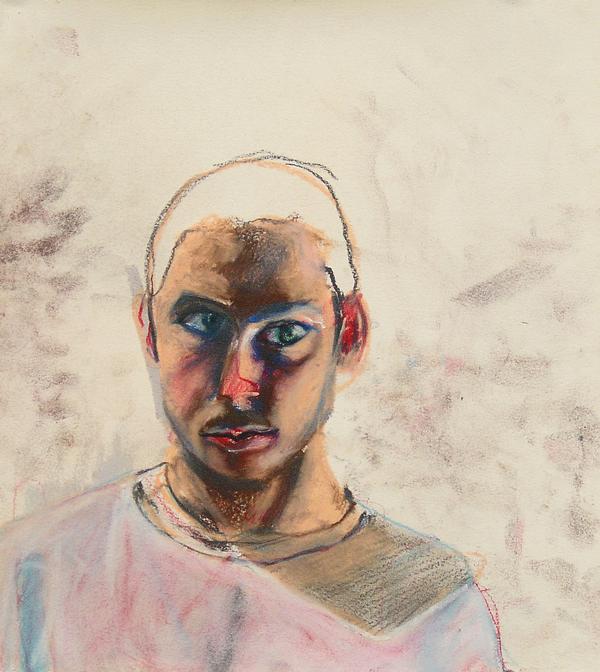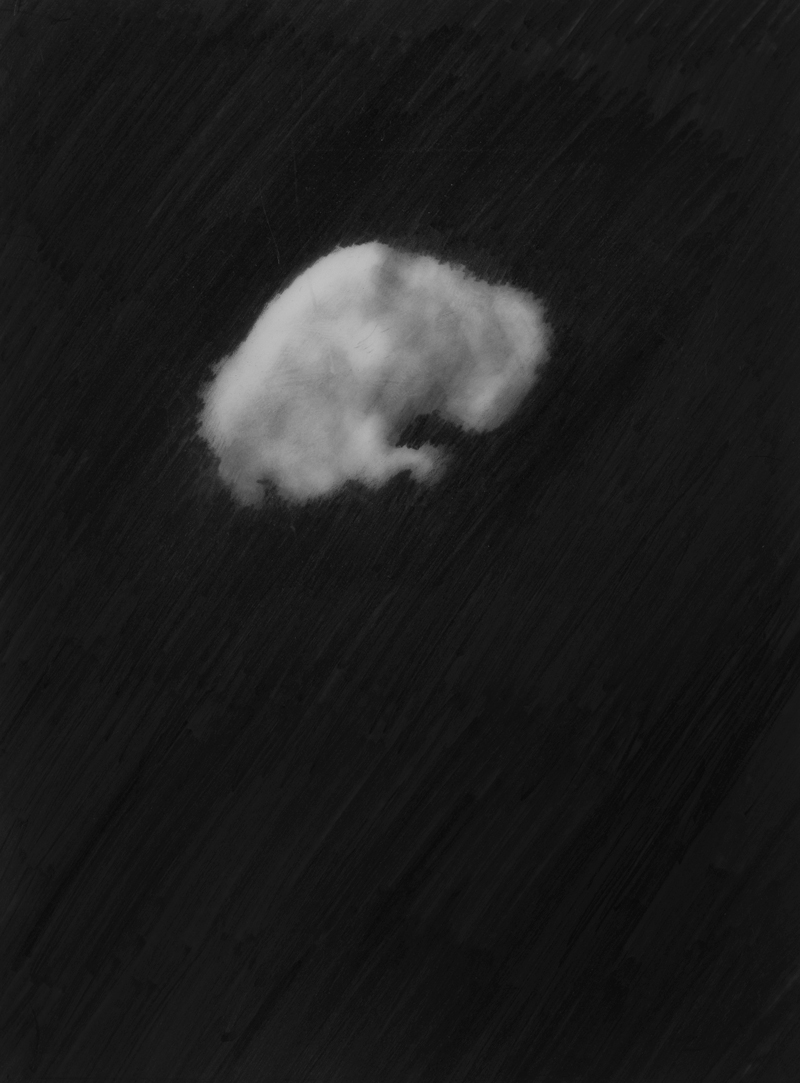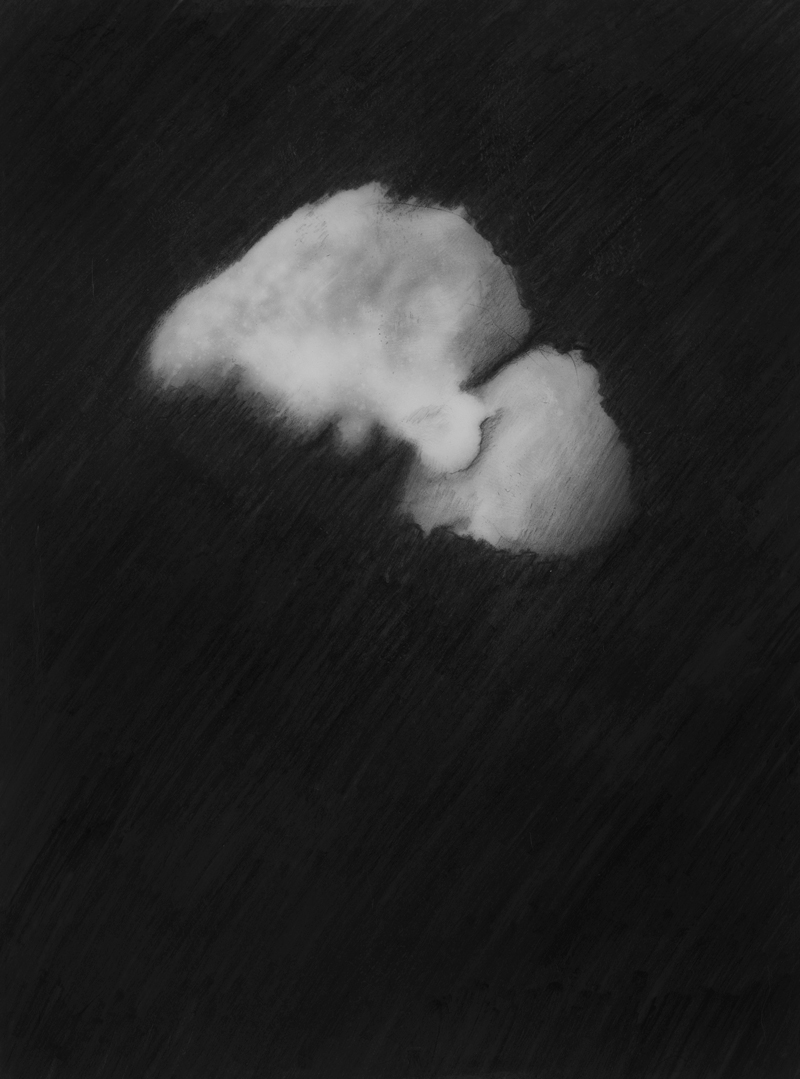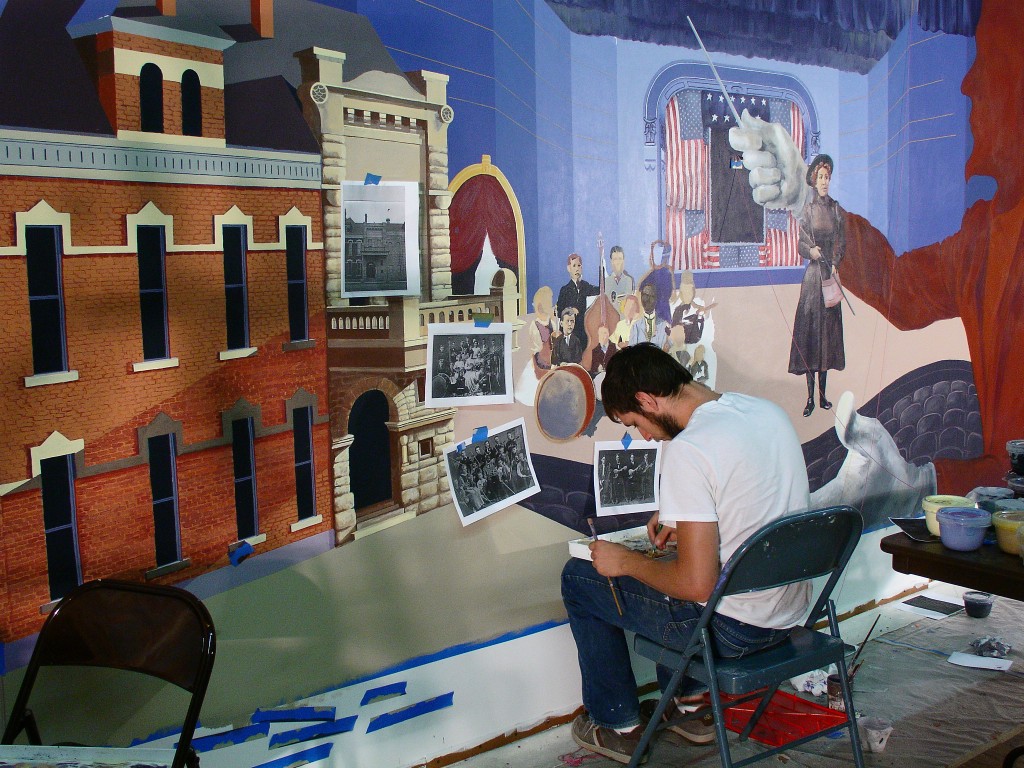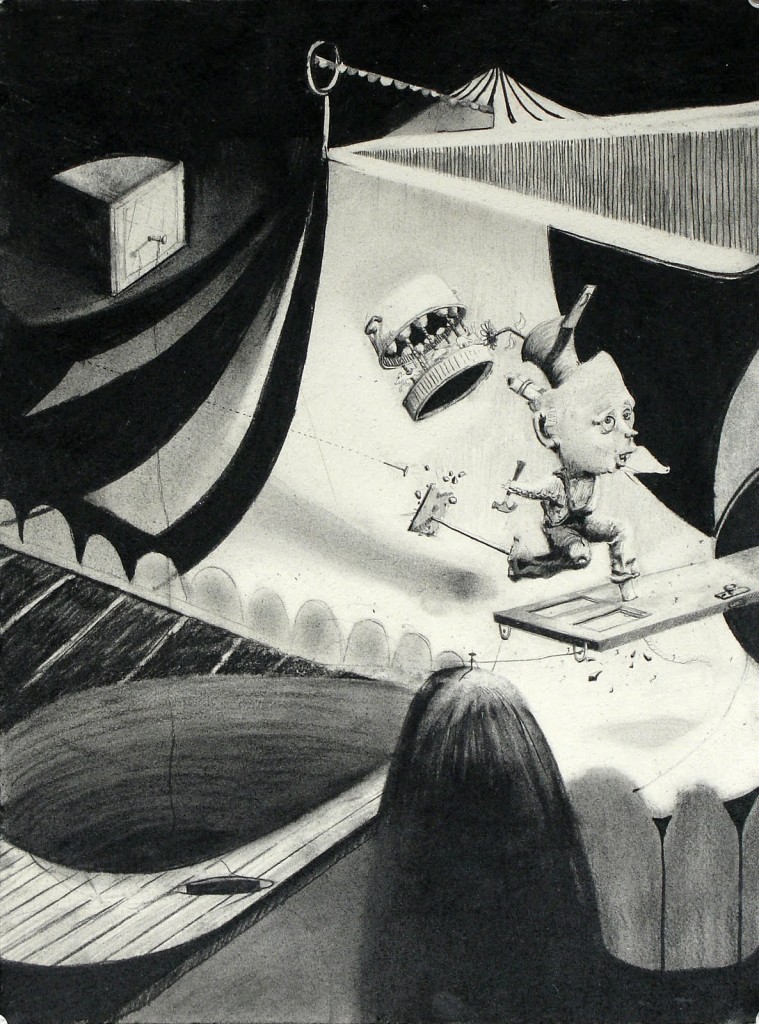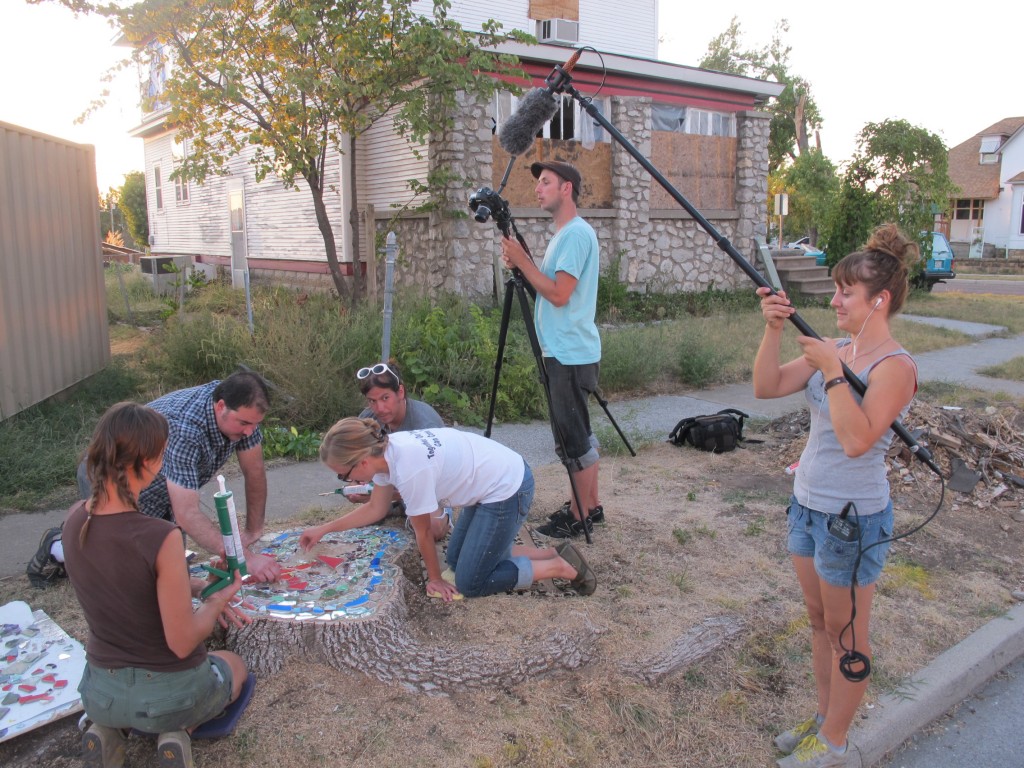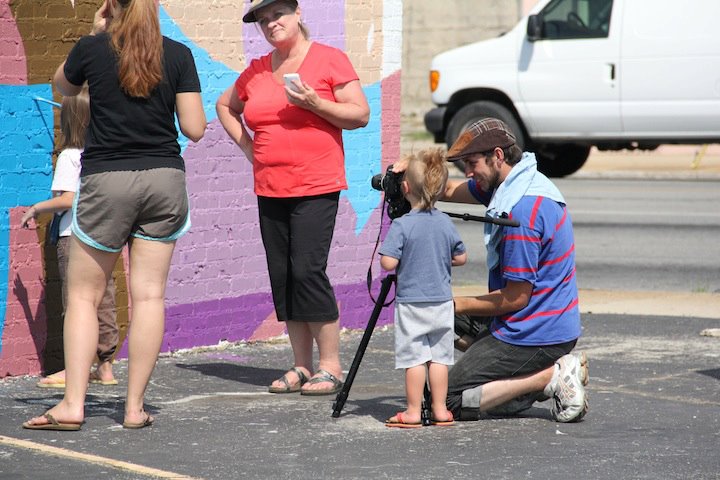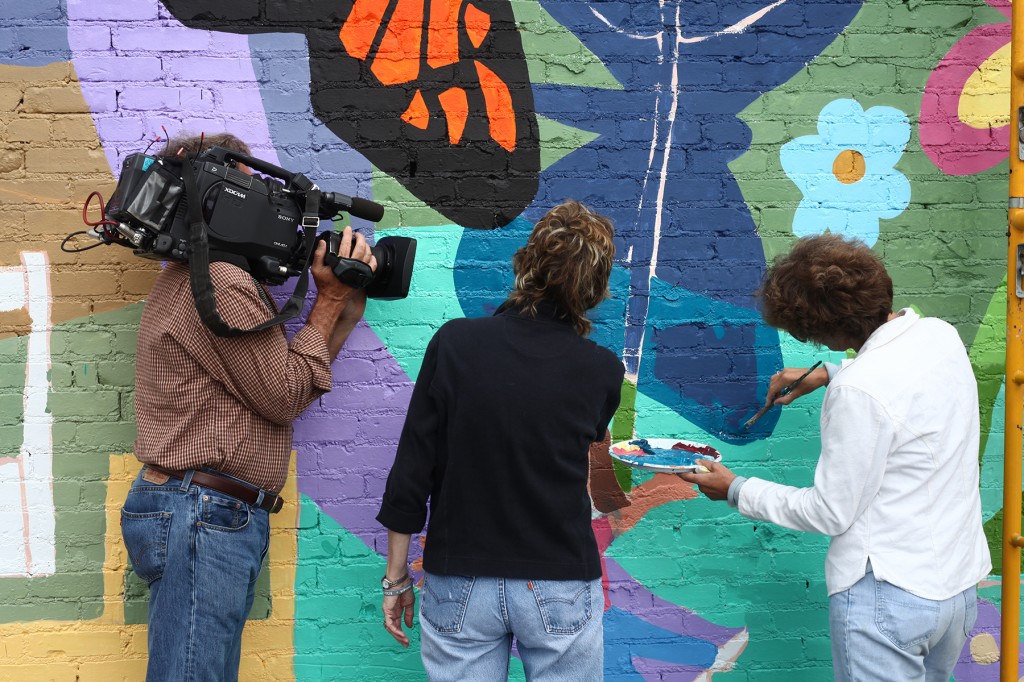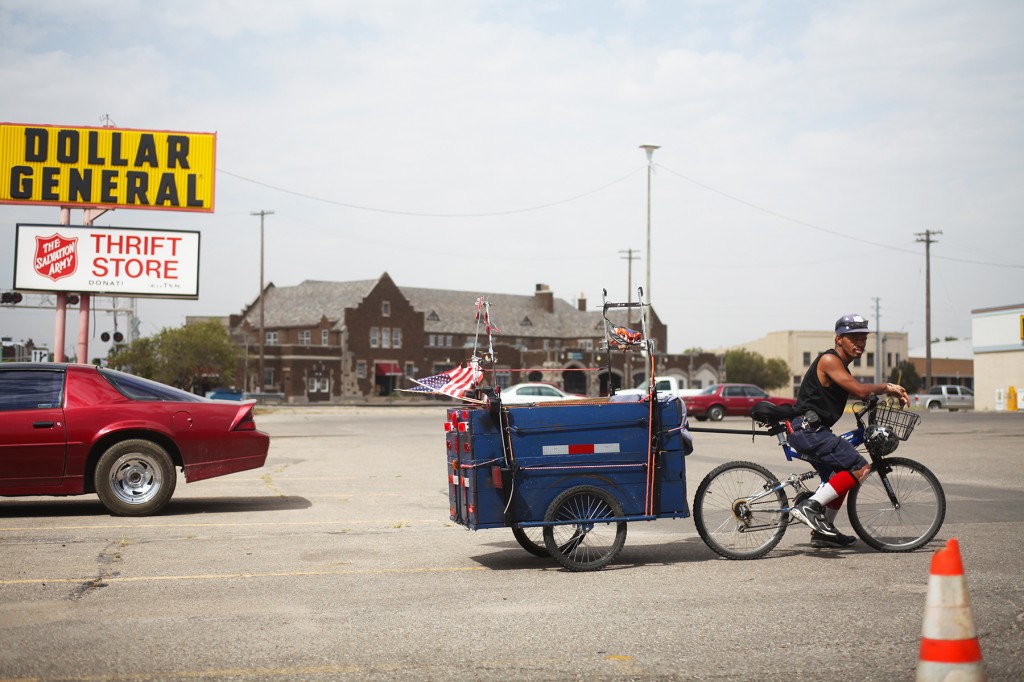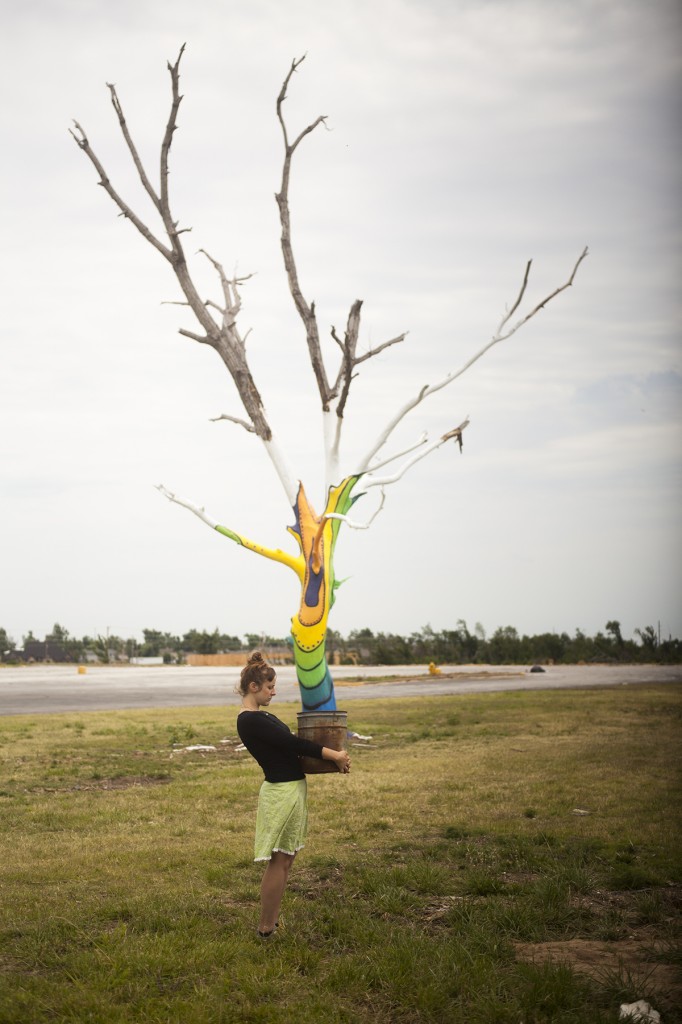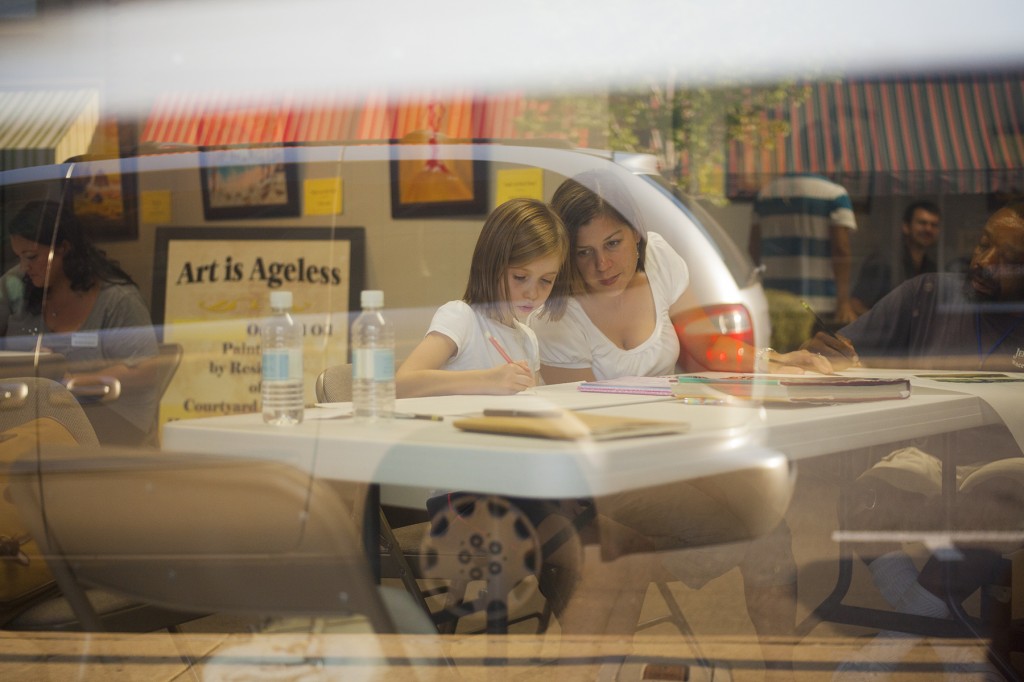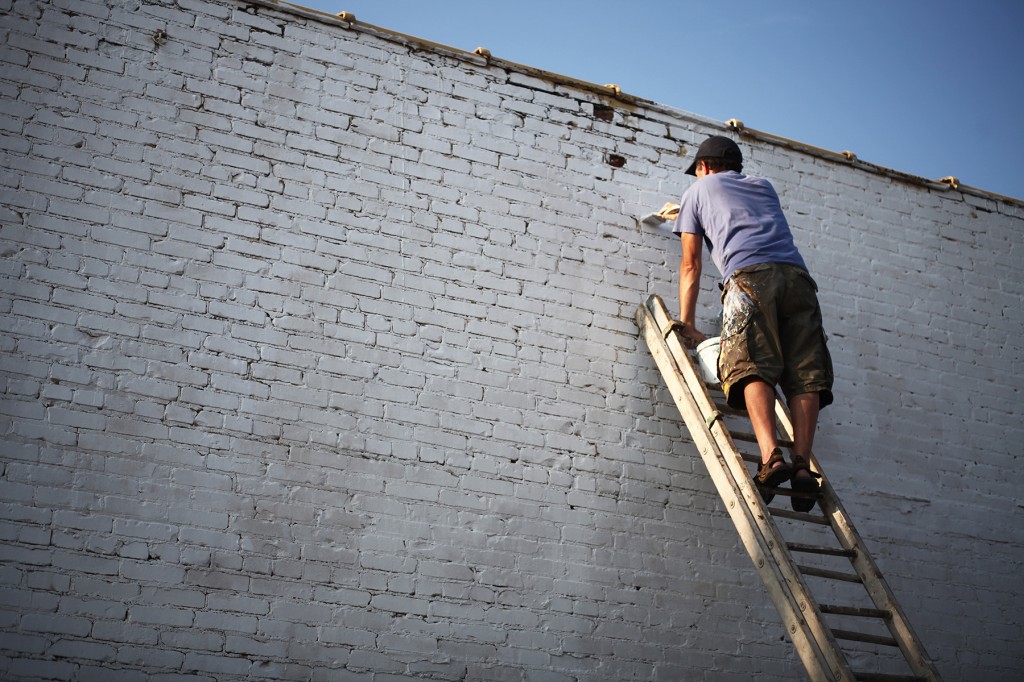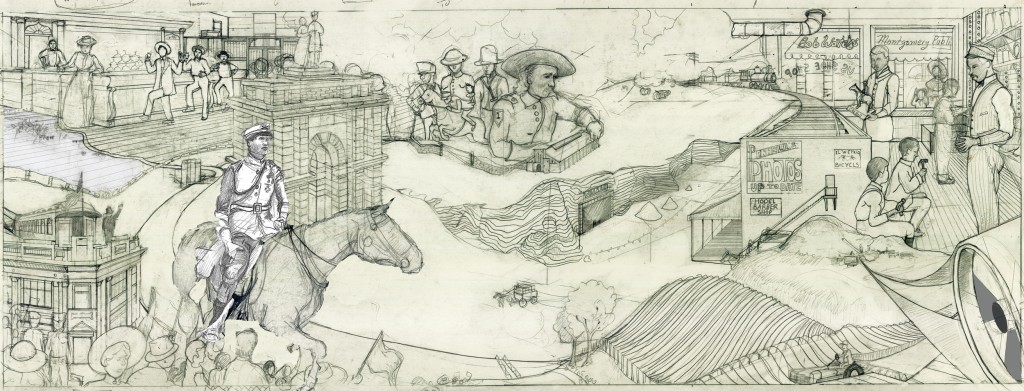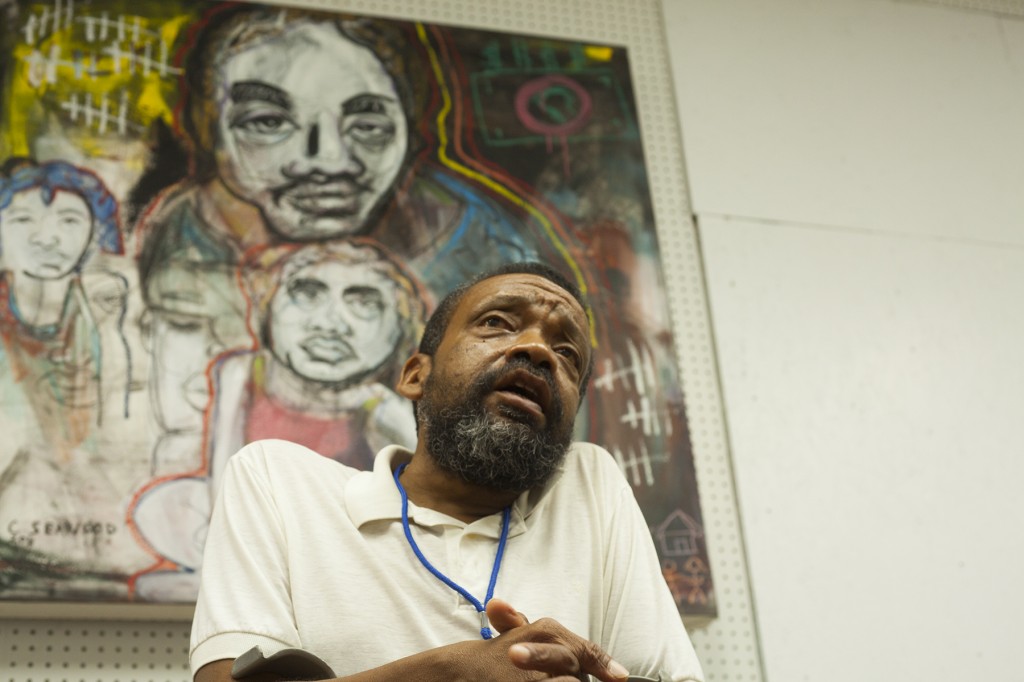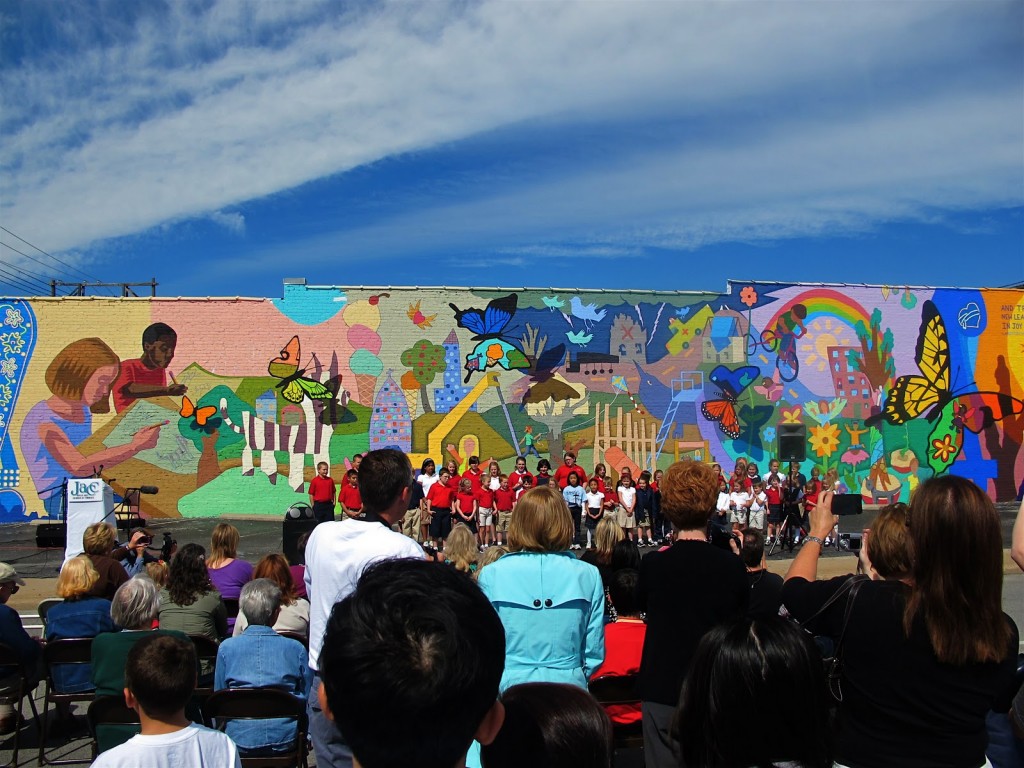Nicholas Ward is a bit of a wild card. Extremely talented and friendly, he has experience with almost any artistic medium – filmmaking, photography, painting, drawing, storytelling, and even creative writing – to name a few. His natural curiosity and, as he calls it, “painful optimism,” combine to make him one incredible artist and person.
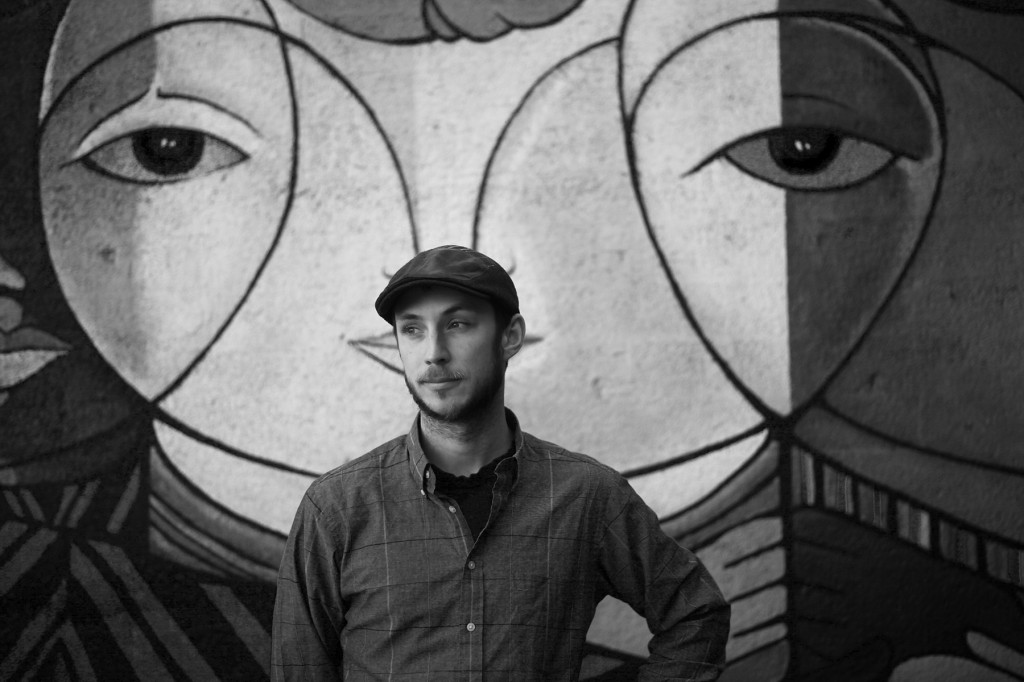
Being the first in his family to graduate from high school, Ward decided to apply for college on a whim. To his surprise, he was accepted and received his BFA in painting and drawing from The University of South Dakota in 2007. From there he journeyed on to receive his MFA in painting and drawing from The University of Kansas in 2010. He has studied at the KID Puppet for Film Animation School in Prague CZ with traditional puppet-makers and master stop-motion animators. In 2011 Nicholas was an artist in residence at Bemis Center for Contemporary Art in Omaha, NE. Since then, he has been on the move; having his hands in multiple projects at a time.
For the past few years, one project has managed to consistently capture his undivided attention. This was the challenge of capturing the many community mural projects along Dave Loewenstein’s (December 2013 artist interview) Mid America Arts Alliances Mural Project route. In tandem with his partner Amber Hansen (December 2012 artist interview), he has worked to capture each town’s story and creative process through a film…that will eventually materialize into Called to Walls. “This documentary film is the story of three middle America communities working to reexamine their histories, celebrate what makes their towns unique, and imagine their futures in the form of giant murals. Part road movie, part inspirational small town drama, and part art documentary, Called to Walls follows Kansas artist Dave Loewenstein during a three year project around the heart of the U.S., helping to reignite a sense of civic pride and creative possibility in places often overlooked.”
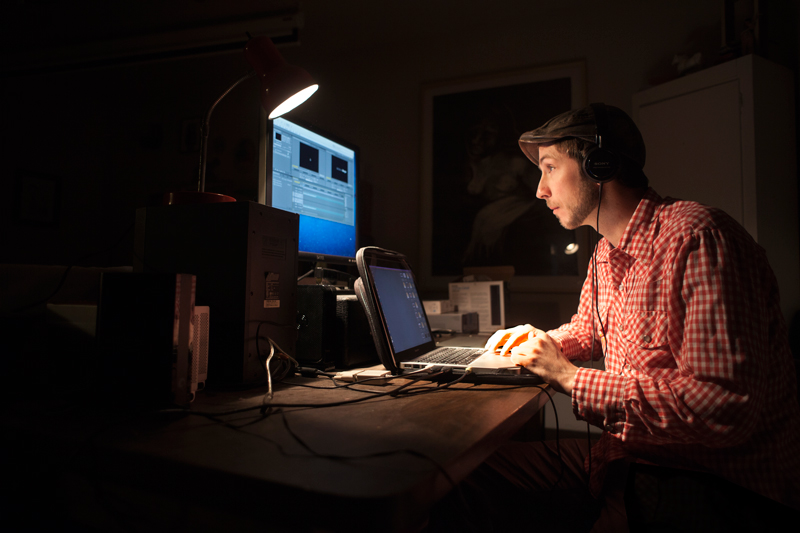
I met Nicholas when I met both Dave and Amber. I was refreshed by his easy-going, positive attitude and amused and entertained by his silliness (you will see). I asked Nicholas to interview with Pif because I was intrigued to learn more about his background. Shouldn’t someone who has spent the past many years capturing and translating others’ stories get the camera turned back on them sometime? I think so. Read on to learn more about Nicholas’ background, his inspirations, the newest joke he made up just the other day, and the soon-expected Called to Walls documentary…
Emily Frankoski: Where are you from originally and where do you now reside? How did you get “from here-to-there?”
Nicholas Ward: I grew up mostly in Southeast South Dakota, Sioux Falls to be exact. After Sioux Falls I moved to Vermillion South Dakota to extend myself in the old’ college try and after finding the art department at the University of South Dakota I was hooked. I focused myself and eventually continued on with graduate school in Lawrence KS, where I currently reside.
EF: What did you want to be when you grew up? How does that aspiration compare to what you are living out in your adult life? Has your journey been linear or non-linear?
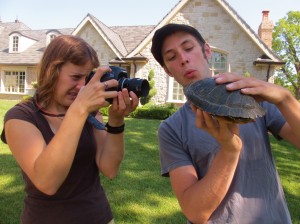 NW: Well, There are possibly two answers. As a kid I was super investigative. One of my first memories is of a sun-bleached turtle skeleton that I found on the outskirts of Klamath Falls, Oregon on a small river that I remember being called the “Lost River.” Later, upon realization that there were people that studied and spent time around turtles for a living…I decided that is what I wanted to do. In my teens, I gave all of my time to skateboarding and in turn, wanted to become a professional skateboarder. Since then and after college I have manifested a sort of ad-hoc living as an artist. I would say that both my foraging as a child and my time skateboarding as a young adult shared a base element of self-direction and of being inventive, so in that way I might say my journey has had a linear progression. I have also always been painfully optimistic…and in a big way that has played a vital role in all that I have done.
NW: Well, There are possibly two answers. As a kid I was super investigative. One of my first memories is of a sun-bleached turtle skeleton that I found on the outskirts of Klamath Falls, Oregon on a small river that I remember being called the “Lost River.” Later, upon realization that there were people that studied and spent time around turtles for a living…I decided that is what I wanted to do. In my teens, I gave all of my time to skateboarding and in turn, wanted to become a professional skateboarder. Since then and after college I have manifested a sort of ad-hoc living as an artist. I would say that both my foraging as a child and my time skateboarding as a young adult shared a base element of self-direction and of being inventive, so in that way I might say my journey has had a linear progression. I have also always been painfully optimistic…and in a big way that has played a vital role in all that I have done.
EF: What were you like as a kid? What type of student were you and what did you spend your free time doing?
NW: I did lots of crazy stuff as a kid. Much of this was based on the amount of freedom I had at a young age. From 6-12 I really tested my mom’s sanity. Growing up, that energy transitioned into skateboarding and then into art. I was never the best or most attentive student but there was one thing that intrigued me in school and I found it in a creative writing class. It was the process of interpreting poetry. This was the first real subjective discussion I remember encountering in an academic setting. I loved it. Beyond that, I really wasn’t present in school.
EF: You have had struggles with you health in the past and more recently. Life-threatening heart surgeries. If at all, how have these experiences changed your perspective on art and its role in your life?
NW: I’ve had two open-heart surgeries; one when I was 17 and one last October. The main outcome of this for me is that I think much more frequently about how astonishing it is that we get to experience life. It has urged me to become more present and engaged. In a very basic yet poignant way this circumstance has caused me as an artist to become much more intentional with my work. Things I might have more casually engaged with prior to the second surgery are much less likely to occur now. Likewise, some of the things that were hang-ups for me before these experiences (social things etc.) are no longer problems. I contribute all of this to having a closer relationship with mortality…which conversely has translated into a fuller engagement with life.
EF: How did your relationship with art begin? What is your background in art? Explain both your undergraduate and graduate studies.
NW: I was a tinkerer and an imaginer as a kid but as for “art proper”; I had very limited experience until college. Entering into my first year of undergrad I actually had no idea that a person could go to school for art. I was the first person in my family to graduate high school so where I was coming from there wasn’t a lot of insider knowledge about how the whole college situation worked. It was understood that higher education was not an option, but on a dare, I applied to college a year after graduating high school. When I was accepted I was just like “wow, I guess I’ll try this.” I quit the bank job that I had and went to school.
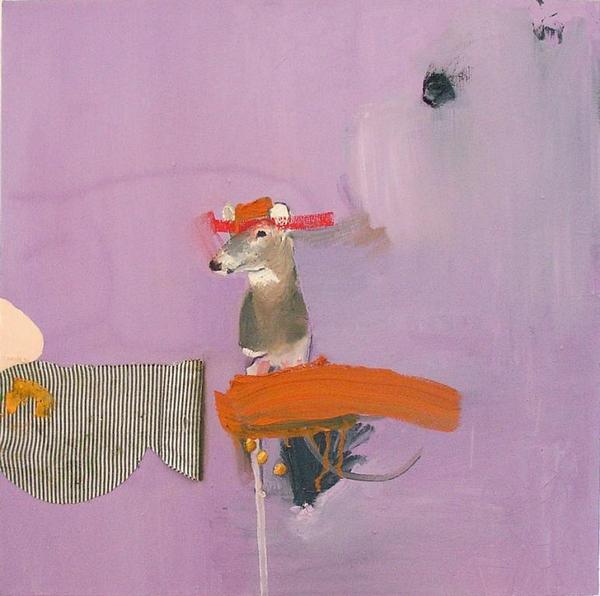 I had a natural knack for drawing that I had only casually explored before school. Eventually I became intrigued by the challenge of creating color in painting. The result was, that beyond making paintings I began to see things quite differently, I became able to distinguish colors in my daily life in ways that I had not been sensitive to before. I had developed a new awareness and spent a few years developing and exploring that awareness through painting. It was a remarkable time.
I had a natural knack for drawing that I had only casually explored before school. Eventually I became intrigued by the challenge of creating color in painting. The result was, that beyond making paintings I began to see things quite differently, I became able to distinguish colors in my daily life in ways that I had not been sensitive to before. I had developed a new awareness and spent a few years developing and exploring that awareness through painting. It was a remarkable time.
Towards the end of my time at the University of South Dakota, a friend introduced me to the Brothers Quay. They’re stop-motion animators, twins actually, from the east coast. Their work was so compelling to me that I immediately began making a stop motion film. I think it was maybe a month between my introduction to their work and my first completed film. I then began to research and found their mentors and their mentor’s mentors and so on. This was my introduction to working in film.
During Graduate school I made a number of experimental animated films. I really loved working in this way but animation as a medium beckons for collaboration and eventually the tedium of working alone combined with the ending of graduate school which brought with it the loss of studio space…all of this put the kibosh, at least a temporary kibosh, on my work in animation.
EF: Was graduate school necessary for what you are doing now? Would you suggest this path for aspiring artists? In your opinion, what are the pros and cons to graduate school in art?
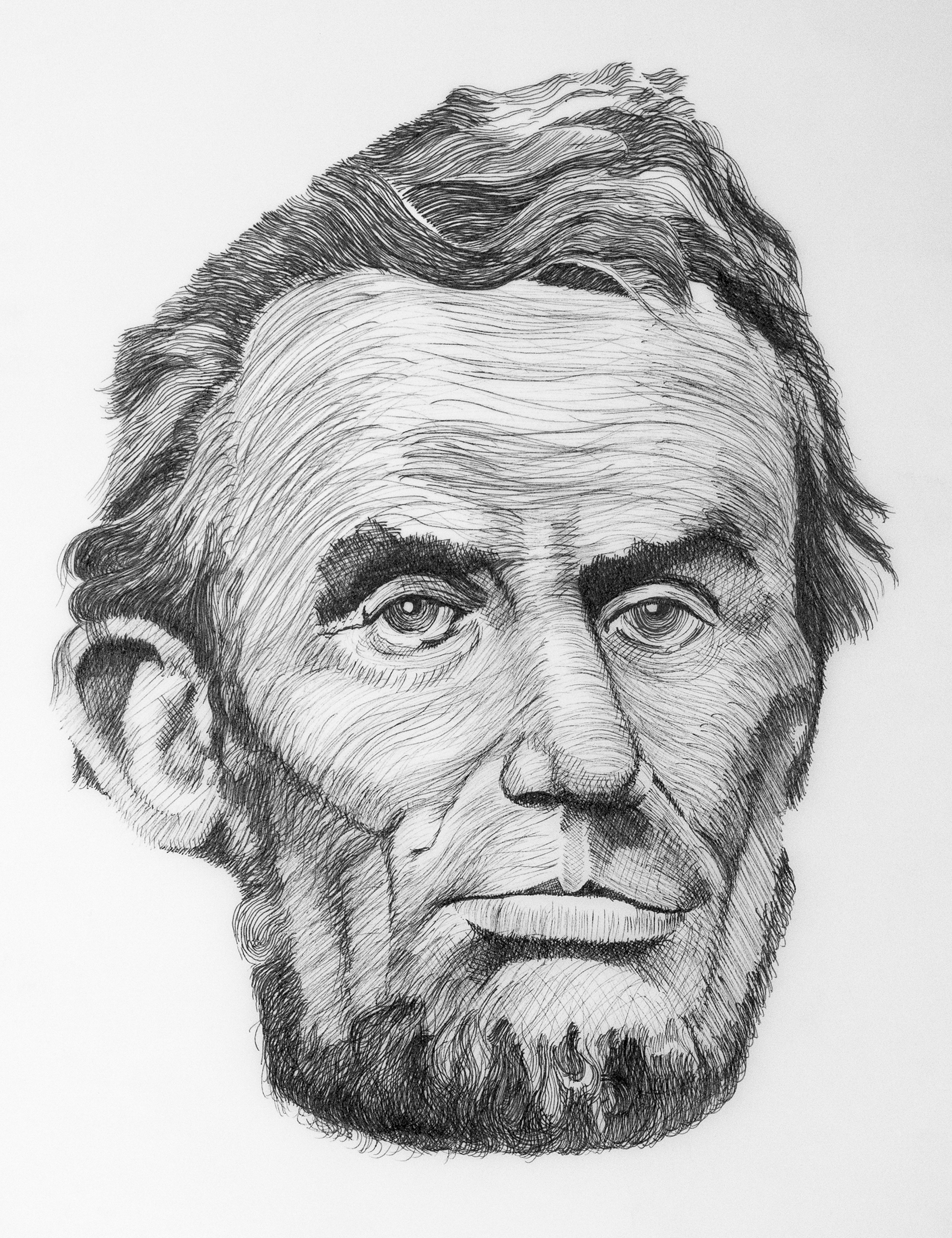 NW: My undergraduate experience was absolutely necessary for what I am doing now, mainly because it was my introduction. In many ways it opened up a whole new realm of experience and thought for me. Going to graduate school was a learning experience. But for me, it was less vital than my experience in undergrad. In my opinion Graduate school, or at least the idea of it, is that you are coming to the table with a skill-set and that your ideas and skills need more incubation time to fully develop. Having gone through that process I would say that this development could be accomplished in many ways external of a formatted academic environment. For one example, the work I have done on the mural projects was much more rewarding for me as a post-secondary mentor-based education than was the institute of graduate school. The situation is of course different for everyone but I think the main consideration has to be an honest confrontation with ones reasons and intentions. Unfortunately for most Graduates in the Fine Arts, there isn’t much of a future guarantee for anything.
NW: My undergraduate experience was absolutely necessary for what I am doing now, mainly because it was my introduction. In many ways it opened up a whole new realm of experience and thought for me. Going to graduate school was a learning experience. But for me, it was less vital than my experience in undergrad. In my opinion Graduate school, or at least the idea of it, is that you are coming to the table with a skill-set and that your ideas and skills need more incubation time to fully develop. Having gone through that process I would say that this development could be accomplished in many ways external of a formatted academic environment. For one example, the work I have done on the mural projects was much more rewarding for me as a post-secondary mentor-based education than was the institute of graduate school. The situation is of course different for everyone but I think the main consideration has to be an honest confrontation with ones reasons and intentions. Unfortunately for most Graduates in the Fine Arts, there isn’t much of a future guarantee for anything.
A reality for people graduating with MFA’s is that there are no jobs for most of them. Graduates are being pumped out into the world at a rate that isn’t sustained by the job market. I’ll borrow a phrase from the writer Arlene Goldbard here, ‘Knowledge factories”. So you have all of these highly skilled artists and thinkers that might be working as a barista or house painter with no meaningful application of the skills they have developed during their state of academic incubation. When they hatch from academia things become a bit complicated. As an addendum to that statement, my hopes for Called to Walls is that it is able to reach the university audience, students, potential students and faculty and that it introduce to them this world of community art. A subject that in many institutions of higher education is still viewed with disregard.
EF: What would you say is your “title”? “Hello, I am Nicholas Ward and I am a _________” Fill in the space.
NW: In the Midwest you can’t say things like that. Everyone is so humble that maybe you could conduct an orchestra and people would ask, “So, you are the conductor?” and the answer would be “Oh me no, I was just waving.” I would say I’m an artist or if the context is specific maybe I am a filmmaker or a muralist or a poet…but in my mind artistic medium is just that, a medium, so the delineation between them is only necessary in specific contexts.
EF: Is art your full time “career”? What led you towards art as your chosen path? Did you always want to be an artist?
NW: Yes. I say yes very confidently because I know in a very basic and personal way that this is what I am best suited to do. For better or worse (hopefully for the better) the work I do through film, in poetry and on these mural projects is the fullest and most sincere expression of what I have to offer at the time I am doing it. One of the best parts of working on these more inclusive/community projects is that the quality and quantity of sincere, vibrant and inspiring people that I get to engage with is remarkable. Since there is no real delineation between my work and my “life”, this is very valuable to me. Many of the folks I work with wouldn’t consider themselves artists and I think rather than that being a reflection on them, it is more a reflection on the kind of veiled elitism that is often a component of what we think of as art. The Mural Projects, if I can speak on their behalf and Called to Walls, are in part efforts to debunk this veil myth and to invite people to celebrate and collaborate through their innate creativity.
EF: Are their struggles to being an artist or has it always paid the bills? How do you go about securing funding for big projects?
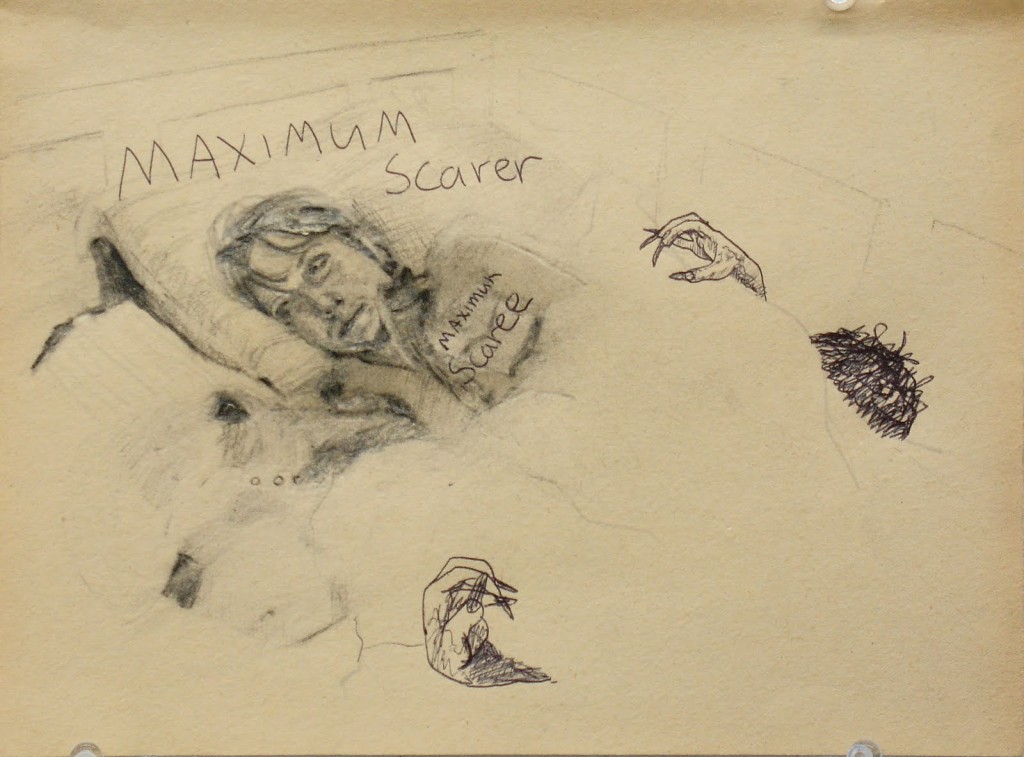 NW: Artistically, the struggles are the good part. This is something I learned through painting. If you can meet the challenge and you are willing to put in the effort, whatever you are working on will in potentially unexpected ways eventually reveal itself in its best form. So the work is rewarding and challenging but it almost never pays the bills so I often find myself doing lots of odd jobs, at any given time I am working on a number of projects, proposals and a number of secondary jobs. Right now, while editing this film full time, I am also doing some remodeling/construction work and shooting photos for a skateboard company. These jobs are great for me because when a mural or film project comes up that requires me to be out of town for several months they don’t really mind. And for such a seat of the pants schedule that is a vitally valuable attribute.
NW: Artistically, the struggles are the good part. This is something I learned through painting. If you can meet the challenge and you are willing to put in the effort, whatever you are working on will in potentially unexpected ways eventually reveal itself in its best form. So the work is rewarding and challenging but it almost never pays the bills so I often find myself doing lots of odd jobs, at any given time I am working on a number of projects, proposals and a number of secondary jobs. Right now, while editing this film full time, I am also doing some remodeling/construction work and shooting photos for a skateboard company. These jobs are great for me because when a mural or film project comes up that requires me to be out of town for several months they don’t really mind. And for such a seat of the pants schedule that is a vitally valuable attribute.
EF: What do you spend most of your time creating? Photos? Films? Paintings? Drawings?
NW: Up until a few years ago I would have had to say drawings, but that has changed quite a bit since 2007. In that year, I discovered European animation and it, and the story behind it (specifically Czech animation) had a profound affect upon my practice as a studio artist. I began focusing on creating stop-motion and experimental film. Going forward in graduate school it was the same, the funny thing is that I have a masters degree in painting and drawing and I didn’t do a single painting in graduate school. For the past three years hands down the bulk of my time has been invested in Film.
EF: What would you call your prominent medium and how would you explain it to a novice?
NW: The work I have been doing for the past few years is in film and community based mural projects. So that would be filmmaking and painting right? No. The cinematography component, while I thoroughly enjoy it, is actually a small portion of the work that is done for these film projects. Taking on a project like Called to Walls has in turn caused a serious investment into the theory and practice of community based art. Becoming invested in those theories and practices has altered to some extent my own practices and theories on art. So it’s funny that way. In my experience with film, much more time is spent editing, planning, communicating, interviewing, researching and so on, than is spent actually filming. So filmmaking for me is often more like being a filmmaker’s secretary than an actual filmmaker.
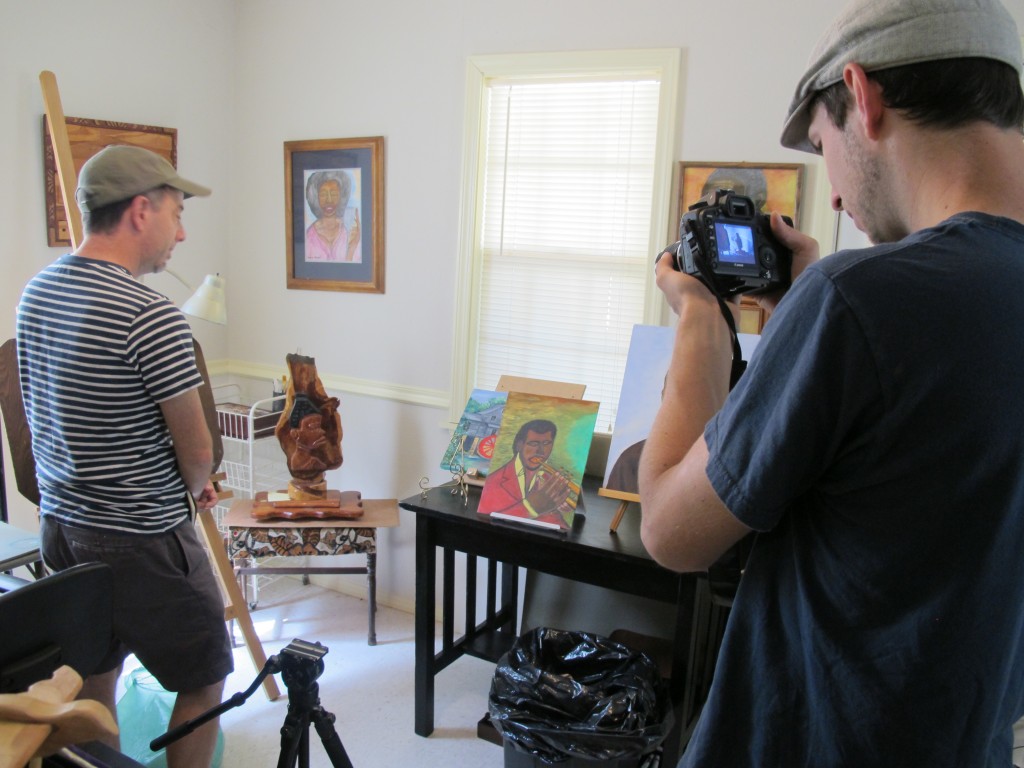 One pivotal realization that I am taking away from Called to Walls, and I think this is something that people intrinsically know but maybe don’t always actively realize, is that it is only the limitations we put upon art that divest it from the greater experience of being a person. The categorical boxes including aesthetic considerations, galleries, museums and other quantifications are really just contained representations of a small portion of the potential of art. The engagement and investment and relational properties of art that I have taken part in on these mural projects supersede any previous experiences I have had with art and a big part of the reason for producing Called to Walls is to relay that rich and vitally important experience to others.
One pivotal realization that I am taking away from Called to Walls, and I think this is something that people intrinsically know but maybe don’t always actively realize, is that it is only the limitations we put upon art that divest it from the greater experience of being a person. The categorical boxes including aesthetic considerations, galleries, museums and other quantifications are really just contained representations of a small portion of the potential of art. The engagement and investment and relational properties of art that I have taken part in on these mural projects supersede any previous experiences I have had with art and a big part of the reason for producing Called to Walls is to relay that rich and vitally important experience to others.
EF: In your opinion, why is what you do important? Why do you create what you do?
NW: My cheater answer as a documentary filmmaker is that what I am doing is important because I am invested in a medium for telling the vital stories of others. My non cheater answer is that I still believe in the artists role as a sort of harmonizer within the tune of the times and to reach that harmony, or if need be, discord one has to be able to hear. In my experience, art is as much a practice of tuning in as it is broadcasting. These mural projects and Called to Walls are if nothing else the sensitive broadcasting of an attentive listening.
EF: If you weren’t an artist, what would you be and why?
NW: Like the greater portion of people who don’t consider themselves artists, I would probably still be an artist. This idea is really endemic of a false pretense of what it is to be an artist. I still have yet to meet a single person who is not an artist. The real trick is listening to the artist within you and having the courage to engage.
STUDIO-BASED ART & COMMUNITY-BASED ART
EF: What type of studio-based art have you done? Where have you exhibited and what has been your favorite exhibition thus far?
NW: I don’t have a favorite exhibition of my own. I have been lucky enough to work with other artists on exhibitions that were really powerful. I assisted the artist Amber Hansen on The Story of Chickens and that was a great project, very powerful, very challenging.
If I had to pick a favorite exhibition I would have to say that although I didn’t get to experience it, Anne Hamilton (who has recently become one of my favorite artists) had a magnificent exhibition at the armory in NYC this past year titled: The Event of a Thread. If I had a time machine I would boost up the flux capacitor with some banana peels and egg shells and log no small number of hours in that wonderful creation.
EF: What type of community-based art have you done?
NW: I’ve worked on numerous murals, many of which were community-based. What I love about the mural projects is that the process of creating the murals gets more and more comfortable but each mural is a new community of participants and a whole new opportunity for meaningful relationships to be developed. It’s pretty cool.
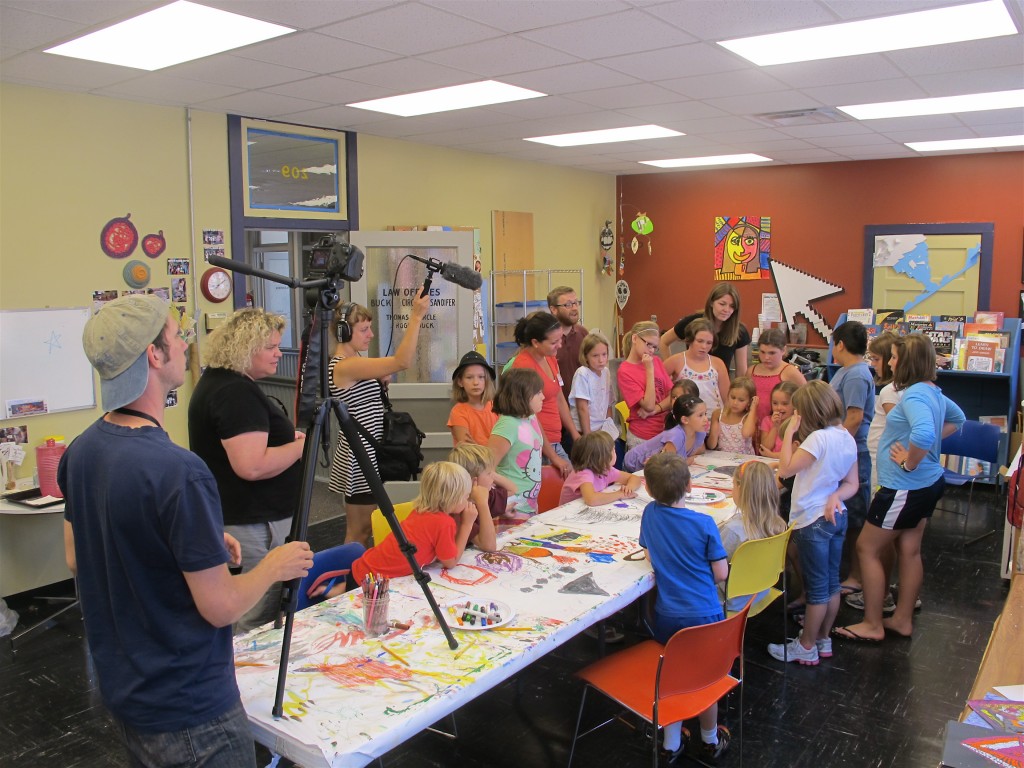 Much of my more recent work in film has been shaped by my experiences on the mural projects and has taken community-based art as its subject. There are also some shorter-form more playful projects. My partner Amber Hansen is light-years ahead of me on this. She put on this wonderful project on in our hometown titled Live TV. It was remarkable. I think she will be doing it again soon and possibly touring it around a bit so there will be some video of it coming up this spring.
Much of my more recent work in film has been shaped by my experiences on the mural projects and has taken community-based art as its subject. There are also some shorter-form more playful projects. My partner Amber Hansen is light-years ahead of me on this. She put on this wonderful project on in our hometown titled Live TV. It was remarkable. I think she will be doing it again soon and possibly touring it around a bit so there will be some video of it coming up this spring.
EF: Do you prefer working alone in the studio or in collaboration with others? Why?
NW: I prefer both for different reasons. And honestly I think both are necessary. Beyond being two types of expression these different ways of working are also two types of engagement and two types of learning. Each part feeds a different capacity and that balance is vital.
QUEEN ALIDORE
EF: What is Queen Alidore? When was it founded and why?
NW: Queen Alidore, as everyone knows, is the imagined Pirate captain of a flying ship. When my partner Amber and I imagined her we did a number of drawings and the main element was that she was neither a boy nor girl, male nor female, in fact she had no real constant attributes. Queen Alidore always became what the situation needed her to be and typing this out now I like that idea even more. I’ve never really had to explain the Queen before… The short answer is that Queen Alidore is the name of our Company. What does our company do? Well it’s probably shaping up to be a bit like the Queen.
EF: How did you become a filmmaker? Was there schooling involved or are you self-taught?
NW: I would say that I am self-learning; self-taught would imply that I know something already. We’ll have to see how Called to Walls shapes up before I take the privilege of naming my education in the past tense. I will say though that approaching filmmaking hasn’t really seemed too much different than painting or writing. On a very basic level you have a space and you fill it. The only difference seemed to be in film you are more beholden to a structure within time and on many levels that has been a relief. Really the hard part has been working on developing intelligence for narrative. To tell the story well and poetically through time.
EF: Explain your journey to becoming a filmmaker?
NW: As I previously touched on, it started when a friend introduced me to the Brothers Quay. Twin stop-motion animators from the East Coast. Their work stopped me in my tracks and I immediately made a stop-motion film. After the Brothers Quay I discovered their influences in Russian and Czech animation and my fascination multiplied. Animation captivated my practice and attention for the duration of Graduate School.
During this time, Amber and I had done a couple of commissioned mural projects, one in Vermillion, South Dakota and one in Junction City, Kansas. A couple months before we graduated I received a call from muralist Dave Loewenstein who had just seen our murals in Junction City. He had been working on a book about the murals of Kansas so somehow in his travels he happened by our murals. During the phone call, he asked if we would come and work with him on the Mid America Mural Project in Tonkawa Oklahoma and we did.
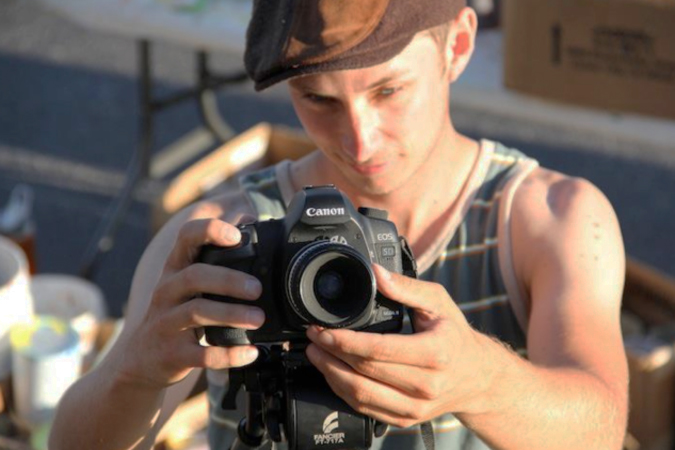 We moved to Tonkawa and began working on the project a month before we graduated. The story, the interactions and the greater philosophy behind the community mural projects needed to be shared. In many ways these mural projects began to answer deeply seated questions that had surfaced during graduate school. These were questions about the role of art in our time and how to direct our abilities and sensitivities towards something that carried significant meaning. So, being somewhat naive and happy-go-lucky, Amber and I decided that it was our job to tell the story. That story is the upcoming documentary film Called to Walls.
We moved to Tonkawa and began working on the project a month before we graduated. The story, the interactions and the greater philosophy behind the community mural projects needed to be shared. In many ways these mural projects began to answer deeply seated questions that had surfaced during graduate school. These were questions about the role of art in our time and how to direct our abilities and sensitivities towards something that carried significant meaning. So, being somewhat naive and happy-go-lucky, Amber and I decided that it was our job to tell the story. That story is the upcoming documentary film Called to Walls.
EF: What is Called to Walls?
NW: Our Current and most ambitious undertaking to date. A feature-length documentary film. Beginning in the town of Tonkawa, OK, Called to Walls is the story of three middle America communities working to reexamine their histories, celebrate what makes their towns unique, and imagine their futures in the form of giant murals. Part road movie, part inspirational small town drama, and part art documentary, Called to Walls follows Kansas artist Dave Loewenstein during a three year project around the heart of the U.S., helping to reignite a sense of civic pride and creative possibility in places often overlooked.
More than just a document, this film is the product of three years of our lives. The production schedule for each of the mural projects was really intense. Amber and I moved to each host community and remained for a period of three months, we got to know the community, we made life-long friends, collaborated on the mural projects and really lived what we were filming. For us as filmmakers this story in many ways is the story of our lives for those three years.
EF: How/when can we see it?
NW: Called to Walls will have its first viewing on April 3rd at the Community Built Association Conference in Davis California. As of May the film will begin traveling the festival circuit and who knows from there. Anyone interested in exhibiting the film can contact us through Calledtowalls.com
FUTURE PROJECTS
EF: Any projects in the works that you are looking forward to?
NW: There are three projects right now that I am really excited about. The first is for the restoration of ten WPA era murals completed in 1941 by the Lakota artist Oscar Howe. This project should be taking place beginning in May of 2014 in Mobridge, SD. I’ve been working on organizing this restoration for two years and couldn’t be more excited to see it come to fruition. The second project is a short (20min) documentary about a phenomenal artist out of Hastings Nebraska by the name of Dave Stewart (b. 1939). He has an amazing story and his character is one that might call for the dusting off of some of those old animation skills. I am very excited for that. The third is an ongoing project that is tied into my skateboard photography; I’ve been working on a highly-secret photo series for the last two years and am hoping to have an exhibition of these works this fall.
EF: Where do you see yourself in 10 years?
NW: Ideally I would be super busy creating wonderful projects with my favorite person and partner Amber Hansen. I feel good about the work we are doing and if we can grow and expand our sensitivities and capabilities through the types of projects we have been working with I think I would rather enjoy that.
GENERAL Q’S
EF: What have you learned about yourself through your artwork/projects?
NW: I’ve learned a great deal about what I value in the human experience and what role it is that I think art may play in that experience.
EF: Do you work on one project at a time until finished – OR – do you work on multiple projects simultaneously?
NW: Always multiple projects simultaneously. While working on any given project I am usually writing ideas for future projects, drafting grant applications or tackling a simultaneous project in a different medium. Sometimes it feels a bit psychotic but I think it’s a good mental practice and so far the only way to maintain. Coffee helps.
EF: Do you ever have the artist equivalent of “writers block?” How do you get past this so you can keep/finish creating?
NW: I have thought about this… This comes about for me when something is forced. I try to be mindful of what my interpretation of a timeline or a goal is vs. what might actually happen or feel natural. When the time is right and my energy seems to be aligned with the task at hand I find that quite often I can accomplish more in a few hours than I can in a few days of work where I’m not in accordance with my work. It sounds a bit Zen but it is true. The hard part is to become sensitive to and aware of your own rhythms.
EF: When you are not creating, what might one find you doing?
NW: Skateboarding is still number one as a past-time activity, I’ve also been into a lot of nerdy things lately. I got really excited about composting with worms and I also have pet snails, which I highly suggest for everyone. So I’m doing that stuff or having food/drinks with friends.
EF: If you had to pick one piece of your work to represent yourself as an artist, which would it be and why?
NW: I would have to choose a poem. Maybe The Hayloft of our Years. I chose a poem because emotion can so quickly take hold and slip away in a poem, it’s very immediate and It’s one of the places I feel most comfortable. Somehow to me it fells as if the medium itself lures out things that aren’t preconceived. So it’s revealing and surprising in that way.
EF: For whom do you create? Who is your audience?
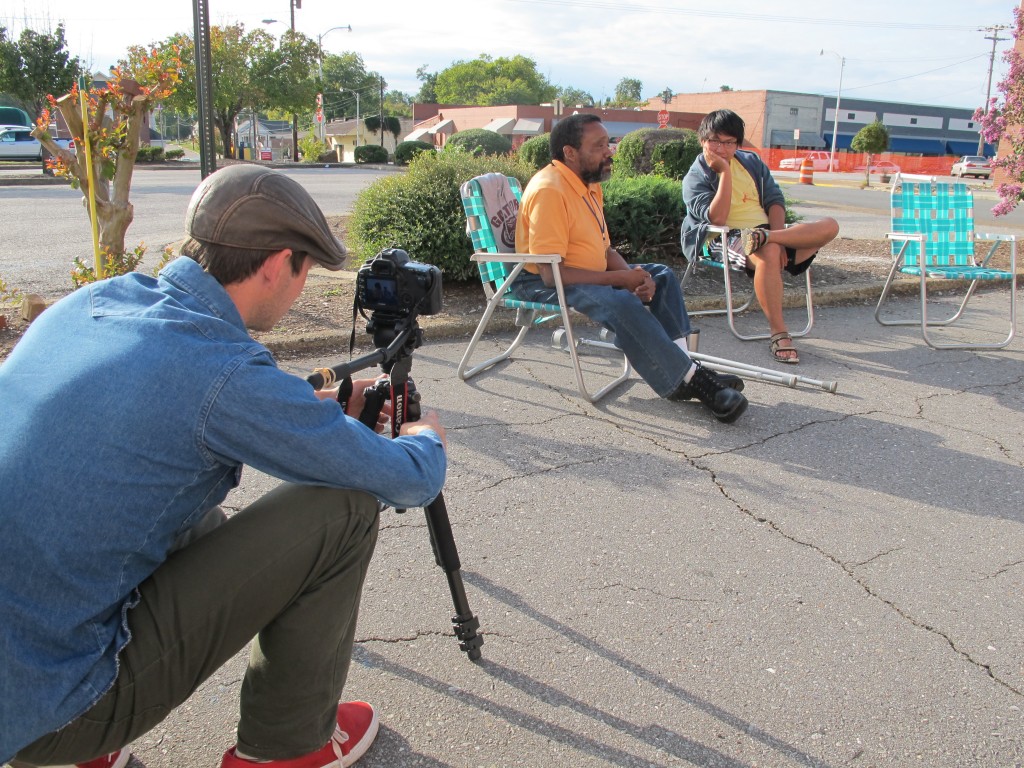 NW: We’ve made a conscious effort to construct the story of Called to Walls for a general audience. This really came quite naturally. The story itself is about what happens when people come together in small communities to reexamine their histories, to talk about the present time and to collaboratively imagine their futures. In some towns this takes place within a neighborhood and in others it’s the entire community. More than being educational or straight documentary Called to Walls is the compelling story of one potential for an art that brings communities together. In the film, that art exists as large community murals though it could easily have been community theatre or a collaborative musical production. One of our main goals for this film was to extend to a greater audience the transformative experience we encountered while working on these projects.
NW: We’ve made a conscious effort to construct the story of Called to Walls for a general audience. This really came quite naturally. The story itself is about what happens when people come together in small communities to reexamine their histories, to talk about the present time and to collaboratively imagine their futures. In some towns this takes place within a neighborhood and in others it’s the entire community. More than being educational or straight documentary Called to Walls is the compelling story of one potential for an art that brings communities together. In the film, that art exists as large community murals though it could easily have been community theatre or a collaborative musical production. One of our main goals for this film was to extend to a greater audience the transformative experience we encountered while working on these projects.
EF: How do you promote your work? Do you seek out opportunities or do they come to you?
NW: It’s a mix. We have been lucky enough to have a number of projects come to us, this has been the case with many of the mural projects we have worked on. So far each project has sparked an idea for the next project. Called to Walls is the first example. The mural projects were so compelling that we though a film about them should be created. In the beginning it was that straight forward.
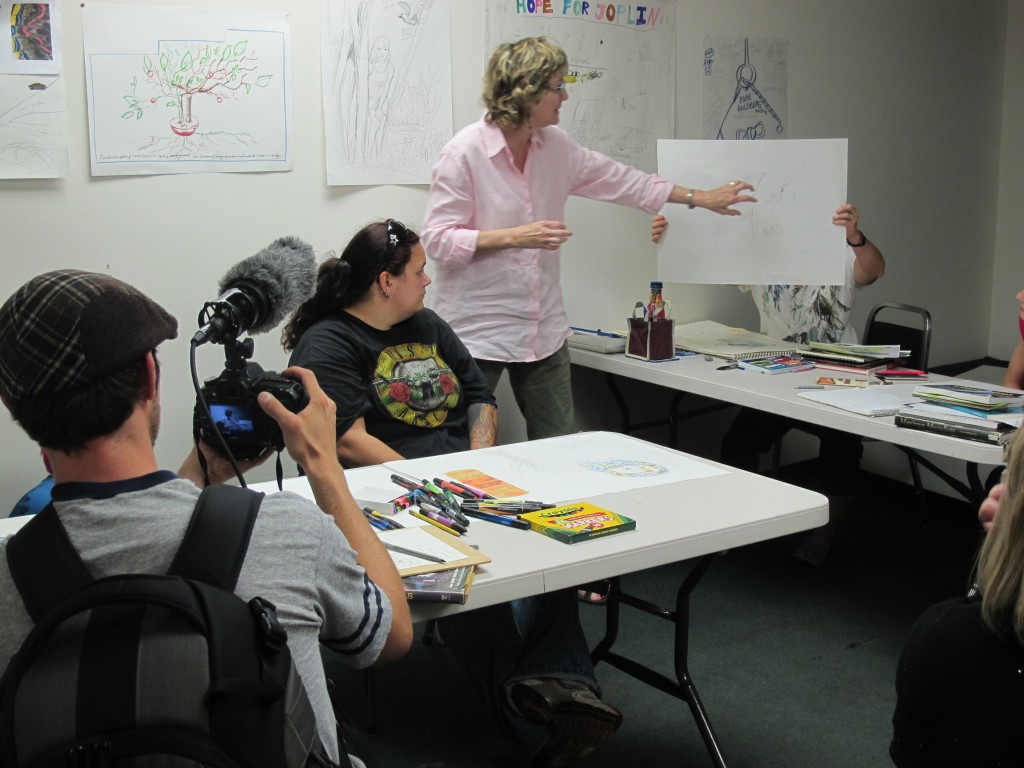 We always have a few projects in the back of our mind and we watch for funding opportunities as they present themselves. If the project is time sensitive then you really have to give a focus to seeking out funding. Funding is a huge part of doing larger projects and often dictates wether or not a project can be realized. An artist, especially one who is doing work beyond the traditional role of selling things in a gallery really has to wear a number of hats. Those hats may include, grant writer, fund raiser, public speaker, organizer, consultant, the list goes on. It is a constant learning process.
We always have a few projects in the back of our mind and we watch for funding opportunities as they present themselves. If the project is time sensitive then you really have to give a focus to seeking out funding. Funding is a huge part of doing larger projects and often dictates wether or not a project can be realized. An artist, especially one who is doing work beyond the traditional role of selling things in a gallery really has to wear a number of hats. Those hats may include, grant writer, fund raiser, public speaker, organizer, consultant, the list goes on. It is a constant learning process.
EF: How do you continue to challenge yourself and grow as an artist?
NW: That is really easy, for years now, everything that I do I am doing at a level where I am in a bit over my head. Based on that, each undertaking is a profound learning experience and a challenge. Lately however the challenge has seemed to be less about the making of things than the whole circumstances surrounding what makes making things possible. I am at a point now where the making is always challenging but that challenge is expected and welcomed. It is the outside circumstances, things like acquiring funding, that have become the real challenge.
EF: To date, which project has given you most satisfaction?
NW: Called to Walls is that project for me. It has been the most challenging and has in many over the last three years become inseperable from my life. The most rewarding aspect has been the formation of so many great friendships in all of the host communities.
EF: What artists do you admire and why?
NW: The artists that I have had the opportunity to work with are the artists I have come to admire most.
EF: Do you have a favorite piece of art (other than your own)?
NW: Everything by Alexander Calder is high on my list, especially his circus and the small mobiles. For contemporary video, there was a piece done by the group Bruce High Quality Foundation that is really powerful. It’s titled: We Like America and America Likes Us. In animation there is currently a work being completed by renowned Russian animator Yuri Norstein it is titled: The Overcoat. When this is completed it will be my favorite piece of art.
EF: What is the best piece of advice you have ever received?
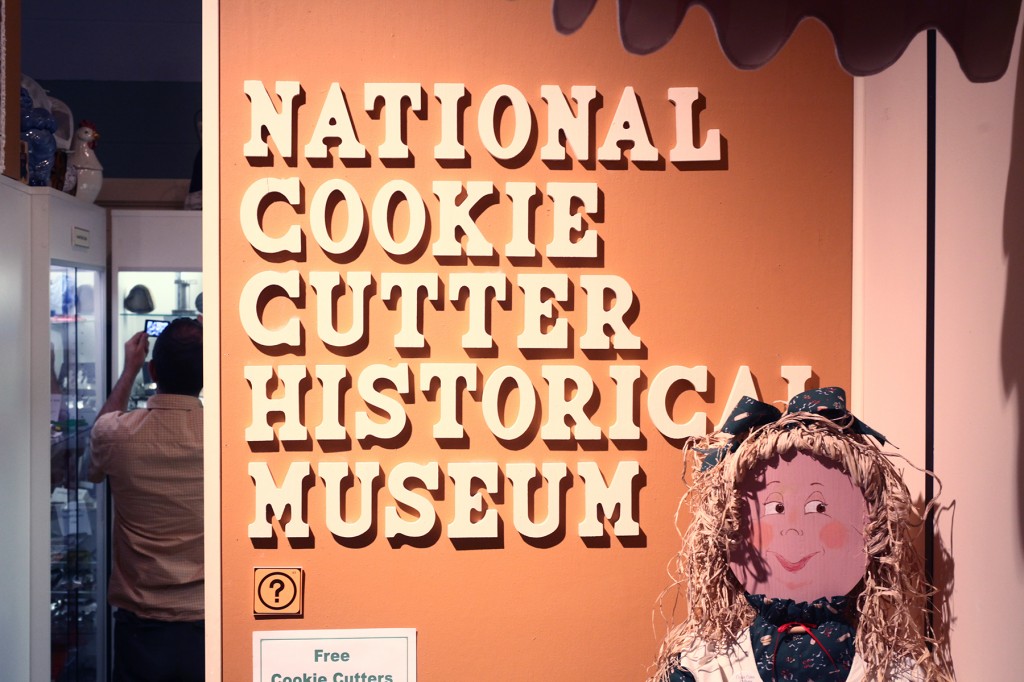
NW: “Things don’t get easier, you just get better.”
EF: What is your favorite book?
NW: Leaves of Grass, Walt Whitman. More specifically, the poem: Crossing Brooklyn Ferry. I don’t think I have ever read anything that has made more sense to me.
EF: What are you currently reading?
NW: The Amazing Adventures of Kavalier and Klay by Michael Chabon; it was lent to me by a friend.
EF: Do you have a favorite quote?
NW: No, but I do have a new favorite joke. I made it up earlier this week! It goes like this, “Friends don’t grow on trees you know,…unless they’re nuts! ”
EF: Where can we see more?
Queen Alidore on Vimeo: http://vimeo.com/queenalidore
Called to Walls Website: http://www.calledtowalls.com/
Nicholas Ward Animations: https://vimeo.com/user3447479/videos
Artwork by Nicholas Ward: http://riverandcloud.blogspot.com/p/video.html
Chophouse Skateboard Photos: http://chophouseskateboards.com/
